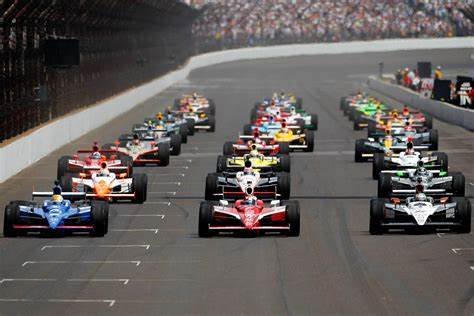The Singapore Grand Prix, first held in 2008, marked a historic moment in Formula 1 as the inaugural night race. This groundbreaking event not only brought the excitement of F1 racing to a vibrant cityscape illuminated by stunning lights but also transformed the landscape of motorsport in several significant ways. Here’s a look at how the Singapore Grand Prix revolutionized night racing and its lasting impact on Formula 1 as a whole.
- Pioneering the Concept of Night Racing
Before the Singapore Grand Prix, all Formula 1 races were held during the day, with drivers facing conditions that evolved with the setting sun. Singapore was the first to host a full-fledged night race, featuring a unique street circuit that allowed fans to experience racing under floodlights. The successful implementation of this format paved the way for other circuits to consider night racing, creating an entirely new dimension in F1.
Key Features:
– Enhanced Visibility: The combination of state-of-the-art lighting and the vibrant city backdrop made for stunning visuals, allowing drivers to race in optimal visibility while maintaining the thrill.
– Festive Atmosphere: The night setting transformed the Grand Prix experience, offering a festive atmosphere for spectators both at the circuit and watching from home.
- Technological Innovations
The Singapore Grand Prix required significant advancements in lighting technology to successfully illuminate the track. With over 1,600 lights installed around the circuit, engineers faced the challenge of replicating daylight conditions to ensure safety and visibility for drivers. This commitment to technology not only enhanced the fan experience but also set new standards for circuit illumination in motorsport.
Technology Impact:
– Improved Safety: The comprehensive lighting systems enhanced safety measures, allowing drivers to navigate the track without compromising visibility.
– Broadcasting Advancements: The eye-catching lights and nighttime visuals captivated television audiences, leading to innovations in broadcasting techniques to capture the thrilling dynamics of night racing.
- Enhanced Fan Experience
The Singapore Grand Prix capitalized on its unique scheduling to draw in large crowds and create a vibrant atmosphere. Night races provide a different experience for fans, allowing them to enjoy the race after work or during the evening without the scorching heat of the day. The city’s breathtaking skyline, coupled with the excitement of F1 racing, made it a must-visit event.
Fan Engagement:
– Extensive Activities: The event frequently features concerts, entertainment, and cultural festivities in and around the race area, making it more than just a racing competition.
– Global Exposure: The success of this unique format allowed the event to gain international recognition, turning it into a key fixture in the annual F1 calendar.
- Influence on Future Events
Following the successful implementation of the Singapore Grand Prix, other circuits began to explore the night race format. In 2014, the *Abu Dhabi Grand Prix* adopted night racing, and in 2020, the *Portuguese Grand Prix* experimented with a race start just before sunset. This trend demonstrates how the Singapore Grand Prix catalyzed other circuits to consider the appeal and feasibility of hosting night races.
Trend Setting:
– Increased Popularity: Night racing has become enticing not just for drivers and teams but also for fans drawn to the unique experience, increasing attendance and viewership for night events.
– Atmospheric Extensions: As more circuits host night races, the atmosphere associated with nighttime events has become a celebrated aspect of Formula 1, leading to more energetic and dynamic race weekends.
- Cultural and Economic Impact
The Singapore Grand Prix has significantly boosted the local economy and tourism, attracting thousands of visitors from around the world each year. The event has established Singapore as a key player in the global motorsport scene, promoting its cultural richness and hospitality while showcasing its modern infrastructure and vibrant city life.
Economic Benefits:
– Tourism Boost: The influx of tourists during the Grand Prix weekends supports local businesses, hotels, and restaurants.
– Long-Term Branding: Singapore’s successful execution of the event helped position it as a prime destination for international sporting events, thus enhancing its global brand.
Conclusion
The Singapore Grand Prix has fundamentally transformed the landscape of night racing in Formula 1. Its pioneering role has not only set the stage for future night races but has also redefined the fan experience and demonstrated the potential of utilizing innovative technologies in motorsport. As the event continues to thrive, it remains a testament to the idea that creativity and innovation can elevate the excitement of racing to new heights, solidifying its place as one of the most anticipated events on the Formula 1 calendar.










